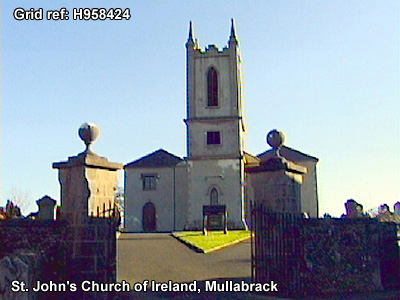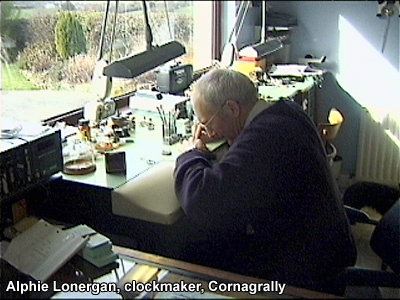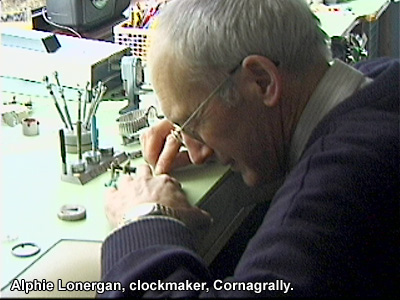

(from T. G. Patterson, Harvest Home: The Last Sheaf, Dundalgan Press, 1975,. pp. 175,176. )
William Kennedy was born in Banbridge in I763. He lost his sight through smallpox in the fourth year of his age, but even as an infant was interested in mechanical pursuits. His genius first showed itself in the manufacture of children's toys, in the formation of which he used home-made tools. These were added to by a gift from a friend in his ninth year. Soon afterwards his work became so perfect that he became well known locally.
At the age of thirteen he decided to study music and was sent to Armagh to learn the violin under Mr. Moorehead, a notable teacher of those days. During his stay he lodged with a cabinetmaker from whom he acquired much useful information and experience of tools and their use that later proved very profitable to him.
He remained in Armagh about fifteen months, afterwards returning home, there to specialize in household furniture. Later he became desirous of attaining a knowledge of clock-making. He set about his new hobby by buying an imperfect clock and making it whole. About that time (1786) he attracted the attention of Mrs. Reilly of Scarva for whom he made an elegant writing cabinet. There he first became acquainted with the Irish pipes and, incidentally, met and heard the celebrated Downey, one of the great pipers of those days.
The music of the pipes instilled a desire to master them also so he purchased an old and defective set that gave him so much trouble he set about contriving a new one instead. In that he succeeded also.
About 1793 he married. At that time he was repairing wind and stringed instruments, constructing clocks, ordinary and musical, as well as cabinet-making. He also designed and made desks, book-cases, clock-cases, chairs, tables, etc. His principal employment, however, was the making of Irish pipes and shuttles and temples [1] for weavers.
He left County Down in 1798 and settled in the parish of Mullabrack, County Armagh, in the vicinity of Markethill, there to teach a young man the clock-making business. In March of 1800 he removed to Tanderagee where he continued to work on the Irish pipes, eventually adding various improvements. At the same time he continued turning out clocks and clock-cases, and was much in demand for the repair of barrel and chamber organs.
An account of his life was written in 1815 and published in Newry in the following
year. He was then alive and an absolute master of the various crafts in which
he worked.
Footnote
[1] Devices for keeping the cloth stretched to proper width in the loom.



